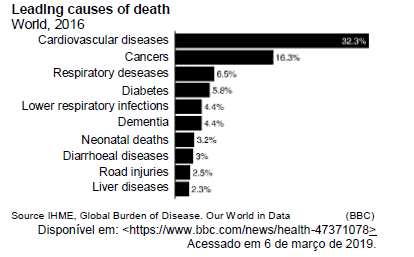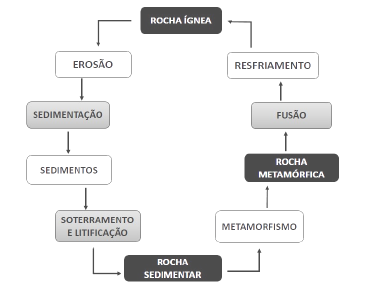Questões de Vestibular CESMAC 2019 para Prova de Medicina-2019.2- 1° DIA
Foram encontradas 48 questões
How Sleep Strengthens Your Immune System
Numerous studies have reported the benefits of a good night’s sleep, and now researchers from Germany have found that sound sleep improves immune cells known as T cells.
“T cells are a type of… immune cells that fight against intracellular pathogens, for example virus-infected cells such as flu, HIV, herpes, and cancer cells,” Stoyan Dimitrov, PhD, told Healthline.
The study found a new mechanism through which sleep can assist the immune system.
“We show that the stress hormones adrenaline and noradrenaline and pro-inflammatory molecules prostaglandins inhibit the stickiness of a class of adhesion molecules called integrins,” Dr. Dimitrov said. “Because the levels of adrenaline, noradrenaline, and prostaglandins are low during sleep time, the stickiness of the integrins is stronger. This stickiness is important because in order for T cells to kill virus-infected cells or cancer cells, they need to get in direct contact with them, and the integrin stickiness is known to promote this contact.”
When cells in the body recognize a virally infected cell, they activate integrins, a sticky type of protein, that then allows them to attach to and kill infected cells.
The researchers compared T cells from healthy volunteers who either slept or stayed awake all night.
They found that in the study participants who slept, their T cells showed higher levels of integrin activation than in the T cells of those who were awake.
The findings indicate that sleep has the potential to improve T cell functioning. For people who get poor sleep, stress hormones may inhibit the ability of T cells to function as effectively.
Less than five hours sleep per night on a regular basis is associated with higher mortality, and having less than seven hours sleep for three nights in a row has the same effect on the body as missing one full night of sleep.
Poor sleep can increase inflammation, blood pressure, insulin resistance, cortisol, weight gain, and cardiovascular disease, as well as decrease blood sugar regulation.
Despite numerous studies proving the negative health impacts of poor sleep, experts say many people still don’t prioritize getting enough sleep.
Adaptado de: <https://www.healthline.com/health-news/how-sleepbolsters-your-immune-system#The-bottom-line> Acessado em 21 de fevereiro de 2019.
How Sleep Strengthens Your Immune System
Numerous studies have reported the benefits of a good night’s sleep, and now researchers from Germany have found that sound sleep improves immune cells known as T cells.
“T cells are a type of… immune cells that fight against intracellular pathogens, for example virus-infected cells such as flu, HIV, herpes, and cancer cells,” Stoyan Dimitrov, PhD, told Healthline.
The study found a new mechanism through which sleep can assist the immune system.
“We show that the stress hormones adrenaline and noradrenaline and pro-inflammatory molecules prostaglandins inhibit the stickiness of a class of adhesion molecules called integrins,” Dr. Dimitrov said. “Because the levels of adrenaline, noradrenaline, and prostaglandins are low during sleep time, the stickiness of the integrins is stronger. This stickiness is important because in order for T cells to kill virus-infected cells or cancer cells, they need to get in direct contact with them, and the integrin stickiness is known to promote this contact.”
When cells in the body recognize a virally infected cell, they activate integrins, a sticky type of protein, that then allows them to attach to and kill infected cells.
The researchers compared T cells from healthy volunteers who either slept or stayed awake all night.
They found that in the study participants who slept, their T cells showed higher levels of integrin activation than in the T cells of those who were awake.
The findings indicate that sleep has the potential to improve T cell functioning. For people who get poor sleep, stress hormones may inhibit the ability of T cells to function as effectively.
Less than five hours sleep per night on a regular basis is associated with higher mortality, and having less than seven hours sleep for three nights in a row has the same effect on the body as missing one full night of sleep.
Poor sleep can increase inflammation, blood pressure, insulin resistance, cortisol, weight gain, and cardiovascular disease, as well as decrease blood sugar regulation.
Despite numerous studies proving the negative health impacts of poor sleep, experts say many people still don’t prioritize getting enough sleep.
Adaptado de: <https://www.healthline.com/health-news/how-sleepbolsters-your-immune-system#The-bottom-line> Acessado em 21 de fevereiro de 2019.
Read the cartoon below and answer the next questions based on it.

Disponível em: <https://www.greetingcarduniverse.com/holidaycards/nurses-day-cards/humor/greeting-card-607707> Acessado em 27 de fevereiro de 2019.
According to the cartoon above it is true to assert that the doctor

According to the graph above we can assert that


A figura representa, em sua totalidade:
Ocorre ao longo dos rios sendo permanentemente atingida pelas cheias. Sua área amplia-se muito no baixo Amazonas, onde a sedimentação é intensa. É uma formação vegetal rica em palmeiras, mas em comparação com outros tipos de florestas da região é a mais pobre em espécies, sendo constituída pelas árvores de menor porte. O extrato arbustivo é inexpressivo, e o extrato herbáceo praticamente não existe
(adaptado de CHRISTOFOLETTI, Antônio. Geografia para o mundo atual. Análise ambiental do Brasil).
A que formação vegetal o autor está se referindo?
1) O agroecossistema é uma unidade básica empregada para análise da sustentabilidade. 2) O agroecossistema inclui de maneira explícita o homem, tanto como produtor como consumidor. 3) Os sistemas agroecológicos promovem a agrobiodiversidade e se relacionam com ela dentro de um processo de relações e interações entre aspectos socioculturais, manejo ecológico de recursos naturais e manejo integrado de ecossistemas. 4) No estudo dos agroecossistemas, realizado sob a ótica geográfica, deve-se levar em consideração apenas as condições edáficas da área que serve de sustentáculo às atividades agrícolas. 5) O processo evoluído na definição de indicadores de sustentabilidade de agroecosssitemas requer ações que objetivam definir e caracterizar a área de estudo e identificar os fatores críticos locais.
Estão corretos:

1) Em aproximadamente 170 anos, o primeiro bilhão de habitantes foi quadruplicado.
2) No final do século passado, a população aumentou em 1 bilhão de habitantes em cada 15 anos.
3) Embora a população mundial esteja crescendo muito, ela tende a se estabilizar.
4) Quando a população mundial era em torno de 450 milhões de habitantes, o crescimento populacional ocorria porque a taxa de mortalidade era menor que a taxa de natalidade.
Estão corretas apenas:

Ao observar o quadro acima, pode-se verificar um inchaço do setor terciário da economia brasileira, do qual podemos afirmar o que segue.
1) O setor terciário absorveu uma percentagem significativa da população economicamente ativa, dispensada do setor secundário.
2) O aumento do setor terciário resulta do aumento da demanda da população urbana por bens e serviços.
3) O aumento do setor terciário resultou do farto desemprego estrutural causado pela abertura da economia nacional ao capital estrangeiro.
4) O processo brasileiro de urbanização caracterizado pelo crescimento populacional, nas metrópoles e nas cidades médias, fez o setor terciário um dos principais segmentos de atividades econômicas do Brasil.
Estão corretas
Analise as alternativas abaixo, relacionadas ao desempenho da agricultura alagoana, no segundo semestre de 2018.
1) A produção da cana-de-açúcar sofreu uma queda de 1,9%, devido às dificuldades financeiras que o setor enfrenta.
2) As produções de arroz, laranja e mandioca tiveram variações negativas, em relação ao mesmo período em 2017, explicada pelo aumento da área plantada.
3) A produção de banana apresentou queda de 19,4%, em relação ao mesmo período de 2017, explicada pela redução de 8,9% na área plantada.
4) A safra de feijão teve um aumento de 89,3% em relação ao mesmo período de 2017; esse aumento é explicado pelas condições climáticas e pelo incentivo do governo.
Estão corretas apenas: